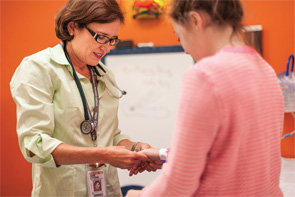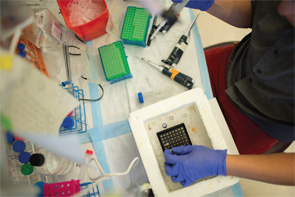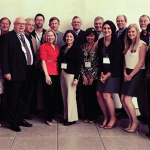
Anne Stevens, MD, PhD, has received numerous Foundation awards to help train the next generation of rheumatologists.
At the 2014 ACR/ARHP Annual Meeting in Boston, the Rheumatology Research Foundation staff sat down with a few ACR and ARHP members to get their take on what the Foundation’s 30th anniversary means to them. We spoke with current and former leaders of the Foundation and the ACR, as well as numerous Foundation award recipients, who have learned, trained, supported, explored and given back to the rheumatology community. Their answers varied, of course. Some members spoke about the incredible work the Foundation supports, the careers they embarked on because of Foundation awards and even the personal rewards that come from giving. Others spoke about the deep connection they have to rheumatology and why the Foundation exemplifies the best of the profession.
Above all, the most common remark was that the Foundation is a tremendous example of the rheumatology community and of rheumatologists and health professionals advancing the field together to create and drive improvements in the lives of patients.
During the meeting in Boston, Benjamin Smith, PA-C, said, “There’s so much good that’s happening because of what the Foundation is doing.”

The Foundation funds essential rheumatology research that will advance treatments and improve patient outcomes.
The Foundation has grown from its humble beginnings in 1985 into the largest private funding source of rheumatology research and training in the U.S., going from distributing just a few thousand dollars’ worth of awards to more than $13 million. Over its 30-year history, the Foundation has invested more than $116 million directly into research and training.
That degree of expansion isn’t possible because of a select few. Rather, the Foundation’s growth and achievements are the result of a concerted effort of many.
During National Arthritis Awareness Month, and indeed throughout 2015, the Foundation will be celebrating this momentous anniversary, shining a light on the incredible advancements made over 30 years.
The Foundation began as a modest and internal fundraising effort to support the research of a few members of the ACR. Eric Matteson, MD, the Foundation’s vice president, states of those early years, “We realized it was never going to be adequate for what we wanted to do to advance understanding of rheumatic diseases and create a work force that was capable of taking care of patients.”
‘There’s so much good that’s happening because of what the Foundation is doing.’ —Benjamin Smith, PA-C
The collective desire to do more eventually grew the Foundation into a premier organization, funding research and training programs around the country. As the portfolio of investments has increased in size and scope, the Foundation has asserted itself as a leader, not just within rheumatology, but among biomedical funders, advancing the most innovative and novel ideas from the brightest investigators.


